Stochastic Dynamics of Fusion Low-to-High Confinement Mode (L-H) Transition: Correlation and Causal Analyses Using Information Geometry
Abstract
:1. Introduction
2. Information Geometry and Instantaneous Transfer Entropy
2.1. Information Rate
2.2. Causal Information Rate
2.3. Instantaneous Transfer Entropy
2.4. Numerical Computation
3. Stochastic Prey–Predator Model
4. Power Threshold for the 2D Deterministic System
- For , .
- For , .
- For , .
5. -Function Initial Conditions and Constant
Fraction of H-Mode and Comparison of with the Deterministic Model
6. Initial Distributions, Information Geometry, and Instantaneous Transfer Entropy
6.1. Constant Q
6.2. Time Varying Q = , ,
6.3. Mirror-Symmetric Q = , ,
7. Comparison between Additive and Multiplicative Noise for a Mirror-Symmetric
8. Conclusions
- Stochastic noise induces different trajectories that are attracted to the H-mode and dithering states, undergoing the L-H transition at different times.
- Stochastic noise induces the appearance of the H-mode at a lower input power while making the complete transition to the H-mode at a larger input power than expected from the deterministic model.
- Stochastic noise can induce stochastic switching between the two competing attractors (H-mode and dithering), leading to alternations between the two with intermittent bursts.
- Stochastic noise induces an uncertainty in the input power and a more gradual transition.
- A rapid temporal change in the input power increases the uncertainty in the input power.
- The power threshold appears to depend on how the strong turbulence and zonal flows are in the L-mode.
- Self-regulation between turbulence and zonal flows is well-characterized by the competition between and the matching of their information rates.
- The causal relation is captured by the causal information rate much better than the instantaneous transfer entropy.
- Internal stochastic zonal noise has similar effects to additive zonal noise and tends to increase hysteresis.
Author Contributions
Funding
Data Availability Statement
Conflicts of Interest
Appendix A. Derivation of the Equality of Equations (6) and (7)
Appendix B. Additional Results

References
- Kadomtsev, B.; Laing, E.W. Tokamak Plasma: A Complex Physical System; IOP Publishing: Bristol, UK, 1992. [Google Scholar]
- Kin, F.; Itoh, T.; Bando, K.; Shinohara, K.; Oyama, N.; Terakado, A.; Yoshida, M.; Sumida, S. Impact of avalanche type of transport on internal transport barrier formation in tokamak plasmas. Sci. Rep. 2023, 13, 19748. [Google Scholar] [CrossRef] [PubMed]
- Qi, L.; Choi, M.J.; Kwon, J.M.; Hahm, T.S. Role of zonal flow staircase in electron heat avalanches in KSTAR L-mode plasmas. Nucl. Fusion 2021, 61, 026010. [Google Scholar] [CrossRef]
- Estrada, T.; Hidalgo, C.; Happel, T.; Diamond, P.H. Spatiotemporal structure of the interaction between turbulence and flows at the L–H transition in a toroidal plasma. Phys. Rev. Lett. 2011, 107, 245004. [Google Scholar] [CrossRef] [PubMed]
- Choi, M.J.; Kwon, J.M.; Kim, J.; Rhee, T.; Bak, J.G.; Shin, G.; Kim, H.-S.; Jhang, H.; Kim, K.; Yun, G.S.; et al. Stochastic fluctuation and transport of tokamak edge plasmas with the resonant magnetic perturbation field. Phys. Plasmas 2022, 29, 122504. [Google Scholar] [CrossRef]
- Wagner, T.I. The history of research into improved confinement regimes. Eur. Phys. J. H 2018, 43, 523. [Google Scholar] [CrossRef]
- Siccinio, M.; Biel, W.; Cavedon, M.; Fable, E.; Federici, G.; Janky, F.; Lux, H.; Maviglia, F.; Morris, J.; Palermo, F.; et al. DEMO physics challenges beyond ITER. Fusion Eng. Des. 2020, 156, 111603. [Google Scholar] [CrossRef]
- Mitchell, J.; Parrott, A.; Casson, F.J.; Eriksson, F.E.; Koechl, F.; Lennholm, M.; Bardsley, O.; Meyer, H.F.; Aleiferis, S. Scenario trajectory optimization and control on STEP. Fusion Eng. Des. 2023, 192, 113777. [Google Scholar] [CrossRef]
- Diamond, P.H.; Itoh, S.-I.; Itoh, K.; Hahm, T.S. Zonal flows in plasma—A review. Plasma Phys. Contr. Fusion 2005, 47, R35. [Google Scholar] [CrossRef]
- Chang, C.S.; Ku, S.; Tynan, G.R.; Hager, R.; Churchill, R.M.; Cziegler, I.; Greenwald, M.; Hubbard, A.E.; Hughes, J.W. Fast low-to-high confinement mode bifurcation dynamics in a tokamak edge plasma gyrokinetic simulation. Phys. Rev. Lett. 2017, 118, 175001. [Google Scholar] [CrossRef]
- Schmitz, L.; Zeng, L.; Rhodes, T.L.; Hillesheim, J.C.; Doyle, E.J.; Groebner, R.J.; Peebles, W.A.; Burrell, K.H.; Wang, G. Role of zonal flow predator-prey oscillations in triggering the transition to H-mode confinement. Phys. Rev. Lett. 2012, 108, 155002. [Google Scholar] [CrossRef]
- Kim, E.; Diamond, P.H. Zonal flows and transient dynamics of the L-H transition. Phys. Rev. Lett. 2003, 90, 185006. [Google Scholar] [CrossRef]
- Yan, Z.; McKee, G.R.; Fonck, R.; Gohil, P.; Groebner, R.J.; Osborne, T.H. Observation of the L-H confinement bifurcation triggered by a turbulence-driven shear flow in a tokamak plasma. Phys. Rev. Lett. 2014, 112, 125002. [Google Scholar] [CrossRef] [PubMed]
- Rasmussen, J.J.; Nielsen, A.H.; Madsen, J.; Naulin, V.; Xu, G.S. Numerical modeling of the transition from low to high confinement in magnetically confined plasma. Plasma Phys. Contr. Fusion 2016, 58, 014031. [Google Scholar] [CrossRef]
- Kobayashi, T.; Itoh, K.; Ido, T.; Kamiya, K.; Itoh, S.-I.; Miura, Y.; Nagashima, Y.; Fujisawa, A.; Inagaki, S.; Ida, K.; et al. Spatiotemporal structures of edge limit-cycle oscillation before L-to-H transition in the JFT-2M tokamak. Phys. Rev. Lett. 2013, 111, 035002. [Google Scholar] [CrossRef] [PubMed]
- Cheng, J.; Dong, Q.; Itoh, K.; Yan, L.W.; Xu, M.; Zhao, K.J.; Hong, W.Y.; Huang, Z.H.; Ji, X.Q.; Zhong, W.L.; et al. Dynamics of low-intermediate-high-confinement transitions in toroidal plasmas. Phys. Rev. Lett. 2013, 110, 265002. [Google Scholar] [CrossRef] [PubMed]
- Xu, G.S.; Wang, H.Q.; Xu, M.; Wan, B.N.; Guo, H.Y.; Diamond, P.H.; Tynan, G.R.; Chen, R.; Yan, N.; Kong, D.F.; et al. Dynamics of L-H transition and I-phase in EAST. Nucl. Fusion 2014, 54, 103002. [Google Scholar] [CrossRef]
- Miki, K.; Diamond, P.H.; Fedorczak, N.; Gürcan, Ö.D.; Malkov, M.; Lee, C.; Kosuga, Y.; Tynan, G.; Xu, G.S.; Estrada, T. Spatio-temporal evolution of the L → H and H → L transitions. Phys. Plasmas 2012, 19, 092306. [Google Scholar] [CrossRef]
- Nishizawa, T.; Almagri, A.F.; Anderson, J.K.; Goodman, W.; Pueschel, M.J.; Nornberg, M.D.; Ohshima, S.; Sarff, J.S.; Terry, P.W.; Williams, Z.R. Direct Measurement of a Toroidally Directed Zonal Flow in a Toroidal Plasma. Phys. Rev. Lett. 2019, 122, 105001. [Google Scholar] [CrossRef]
- Hahm, T.S. Physics behind transport barrier theory and simulations. Plasma Phys. Control. Fusion 2002, 44, A87. [Google Scholar] [CrossRef]
- Shats, M.G.; Xia, H.; Punzmann, H. Suppression of Turbulence by Self-Generated and Imposed Mean Flows. Phys. Rev. Lett. 2007, 99, 164502. [Google Scholar] [CrossRef]
- Kim, E. Consistent Theory of Turbulent Transport in Two-Dimensional Magnetohydrodynamics. Phys. Rev. Lett. 2006, 96, 084504. [Google Scholar] [CrossRef] [PubMed]
- Martin, Y.R.; Takizuka, T.; ITPA CDBM H-mode Threshold Database Working Group. Power requirement for accessing the H-mode in ITER. J. Physics: Conf. Ser. 2008, 123, 012033. [Google Scholar] [CrossRef]
- Kim, E.; Hollerbach, R. Time-dependent probability density functions and information geometry of the low-to-high confinement transition in fusion plasma. Phys. Rev. Res. 2020, 2, 023077. [Google Scholar] [CrossRef]
- Hollerbach, R.; Kim, E.; Schmitz, L. Time-dependent probability density functions and information diagnostics in forward and backward processes in a stochastic prey-predator model of fusion plasmas. Phys. Plasmas 2020, 27, 102301. [Google Scholar] [CrossRef]
- Fuller, P.; Kim, E.; Hollerbach, R.; Hnat, B. Time-dependent probability density functions, information geometry and entropy production in a stochastic prey–predator model of fusion plasmas. Phys. Plasmas 2023, 30, 102502. [Google Scholar] [CrossRef]
- Risken, H. The Fokker-Planck Equation: Methods of Solutions and Applications; Springer: Berlin, Germany, 2013. [Google Scholar]
- Farre-Kaga, H.J.; Andrew, Y.; Dunsmore, J.; Kim, E.; Rhodes, T.L.; Schmitz, L.; Yan, Z. Time-dependent probability density function analysis of H-mode transitions. Europhys. Lett. 2023, 142, 64001. [Google Scholar] [CrossRef]
- Thiruthummal, A.A.; Kim, E. Monte Carlo simulation of stochastic differential equation to study information geometry. Entropy 2022, 24, 1113. [Google Scholar] [CrossRef]
- Frieden, B.R. Science from Fisher Information; Cambridge University Press: Cambridge, UK, 2004. [Google Scholar]
- Shannon, C.E. A Mathematical Theory of Communication. Bell Syst. Tech. 1948, 27, 623. [Google Scholar] [CrossRef]
- Leff, H.S.; Rex, A.F. Maxwell’s Demon: Entropy, Information, Computing; Princeton University Press: Princeton, NJ, USA, 1990. [Google Scholar]
- Davies, P. Does new physics lurk inside living matter? Phys. Today 2020, 73, 34. [Google Scholar] [CrossRef]
- Nielsen, F. An Elementary Introduction to Information Geometry. Entropy 2020, 22, 1100. [Google Scholar] [CrossRef]
- Kowalski, A.M.; Martin, M.T.; Plastino, A.; Rosso, O.A.; Casas, M. Distances in probability space and the statistical complexity setup. Entropy 2011, 13, 1055. [Google Scholar] [CrossRef]
- Oizumi, M.; Tsuchiya, N.; Amari, S. Unified framework for information integration based on information geometry. Proc. Nat. Acad. Sci. 2016, 113, 14817. [Google Scholar] [CrossRef] [PubMed]
- Kim, E. Investigating Information Geometry in Classical and Quantum Systems through Information Length. Entropy 2018, 20, 574. [Google Scholar] [CrossRef] [PubMed]
- Kim, E. Information geometry, fluctuations, non-equilibrium thermodynamics, and geodesics in complex systems. Entropy 2021, 23, 1393. [Google Scholar] [CrossRef] [PubMed]
- Barnett, L.; Lizier, J.T.; Harré, M.; Seth, A.K.; Bossomaier, T. Information Flow in a Kinetic Ising Model Peaks in the Disordered Phase. Phys. Rev. Lett. 2013, 111, 177203. [Google Scholar] [CrossRef] [PubMed]
- Schreiber, T. Measuring information transfer. Phys. Rev. Lett. 2000, 85, 461. [Google Scholar] [CrossRef]
- James, R.G.; Barnett, N.; Crutchfield, J.P. Information Flows? A Critique of Transfer Entropies. Phys. Rev. Lett. 2016, 116, 238701. [Google Scholar] [CrossRef] [PubMed]
- Barnett, L.; Barrett, A.B.; Seth, A.K. Granger Causality and Transfer Entropy Are Equivalent for Gaussian Variables. Phys. Rev. Lett. 2009, 103, 238701. [Google Scholar] [CrossRef]
- Smirnov, D.A. Spurious causalities with transfer entropy. Phys. Rev. E 2013, 87, 042917. [Google Scholar] [CrossRef]
- Van Milligen, B.P.; Birkenmeier, G.; Ramisch, M.; Estrada, T.; Hidalgo, C.; Alonso, A. Causality detection and turbulence in fusion plasmas. Nucl. Fusion 2014, 54, 023011. [Google Scholar] [CrossRef]
- Van Milligen, B.P.; Hoefel, U.; Nicolau, J.H.; Hirsch, M.; Garciá, L.; Carreras, B.A.; Hidalgo, C.; The W7-X Team. Study of radial heat transport in W7-X using the transfer entropy. Nucl. Fusion 2018, 58, 076002. [Google Scholar] [CrossRef]
- Allahverdyan, A.E.; Janzing, D.; Mahler, G. Thermodynamic efficiency of information and heat flow. J. Stat. Mech. Theo. Exp. 2009, 2009, 09011. [Google Scholar] [CrossRef]
- Liang, X.S. Information flow and causality as rigorous notions ab initio. Phys. Rev. E 2016, 94, 052201. [Google Scholar] [CrossRef]
- Kim, E.; Guel-Cortez, A.-J. Causal information rate. Entropy 2021, 23, 1087. [Google Scholar] [CrossRef] [PubMed]
- Kim, E.; Hollerbach, R. Geometric structure and information change in phase transitions. Phys. Rev. E 2017, 95, 062107. [Google Scholar] [CrossRef] [PubMed]
- Heseltine, J.; Kim, E. Comparing information metrics for a coupled Ornstein-Uhlenbeck process. Entropy 2019, 21, 775. [Google Scholar] [CrossRef] [PubMed]
- Guel-Cortez, A.-J.; Kim, E. Information geometric theory in the prediction of abrupt changes in system dynamics. Entropy 2021, 23, 694. [Google Scholar] [CrossRef]
- Chen, Y.C. Lecture 6: Density Estimation: Histogram and Kernel Density Estimator. STAT 425. 2018. Available online: https://faculty.washington.edu/yenchic/18W_425/Lec6_hist_KDE.pdf (accessed on 11 December 2023).
- Singh, R.; Diamond, P.H. A unified theory of zonal flow shears and density corrugations in drift wave turbulence. Plasma Phys. Control. Fusion 2021, 63, 035015. [Google Scholar] [CrossRef]
- Andrew, A.; Bähner, J.-P.; Battle, R.; Jirman, T. H-Mode Power Threshold Studies on MAST. Plasma 2019, 2, 328. [Google Scholar] [CrossRef]
- Tatali, R.; Serre, E.; Tamain, P.; Galassi, D.; Ghendrih, P.; Nespoli, F.; Bufferand, H.; Cartier-Michaud, T.; Ciraolo, G. Impact of collisionality on turbulence in the edge of tokamak plasma using 3D global simulations. Nucl. Fusion 2021, 61, 056002. [Google Scholar] [CrossRef]
- Malkov, M.A.; Diamond, P.H.; Miki, K.; Rice, J.E.; Tynan, G.R. Linking the micro and macro: L-H transition dynamics and threshold physics. Phys. Plasmas 2015, 22, 032506. [Google Scholar] [CrossRef]
- Kim, E.; Hollerbach, R. A stochastic model of edge-localized modes in magnetically confined plasmas. Phil. Trans. R. Soc. A 2023, 381, 20210226. [Google Scholar] [CrossRef]
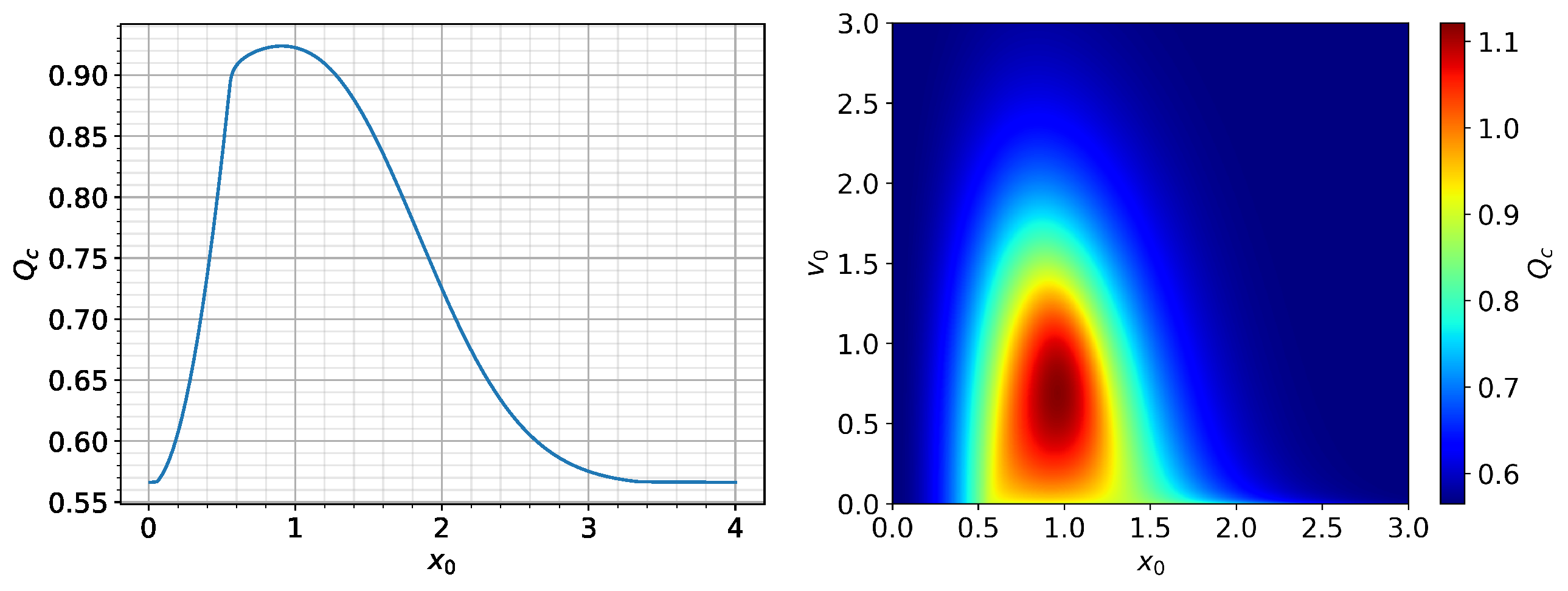
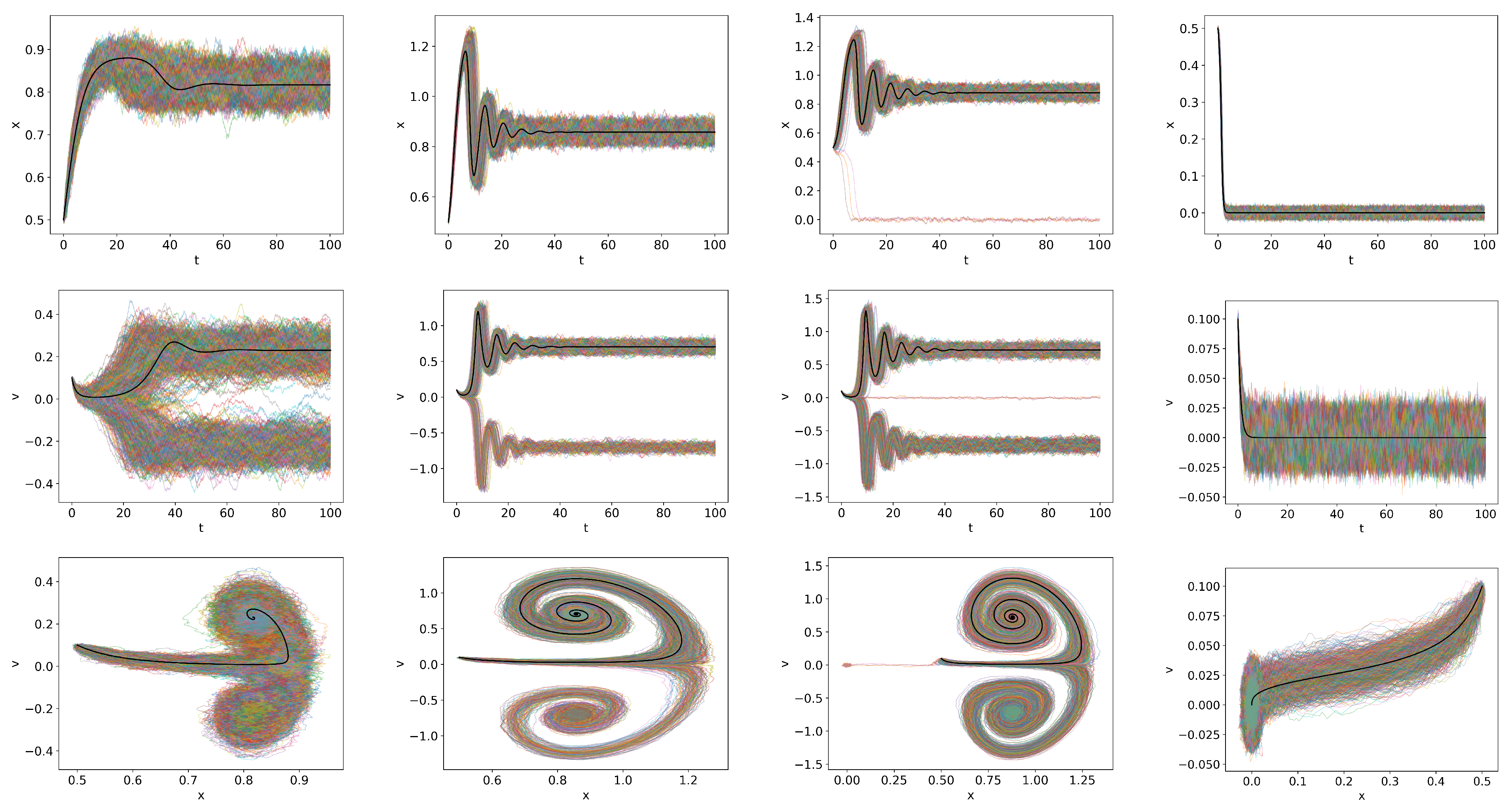
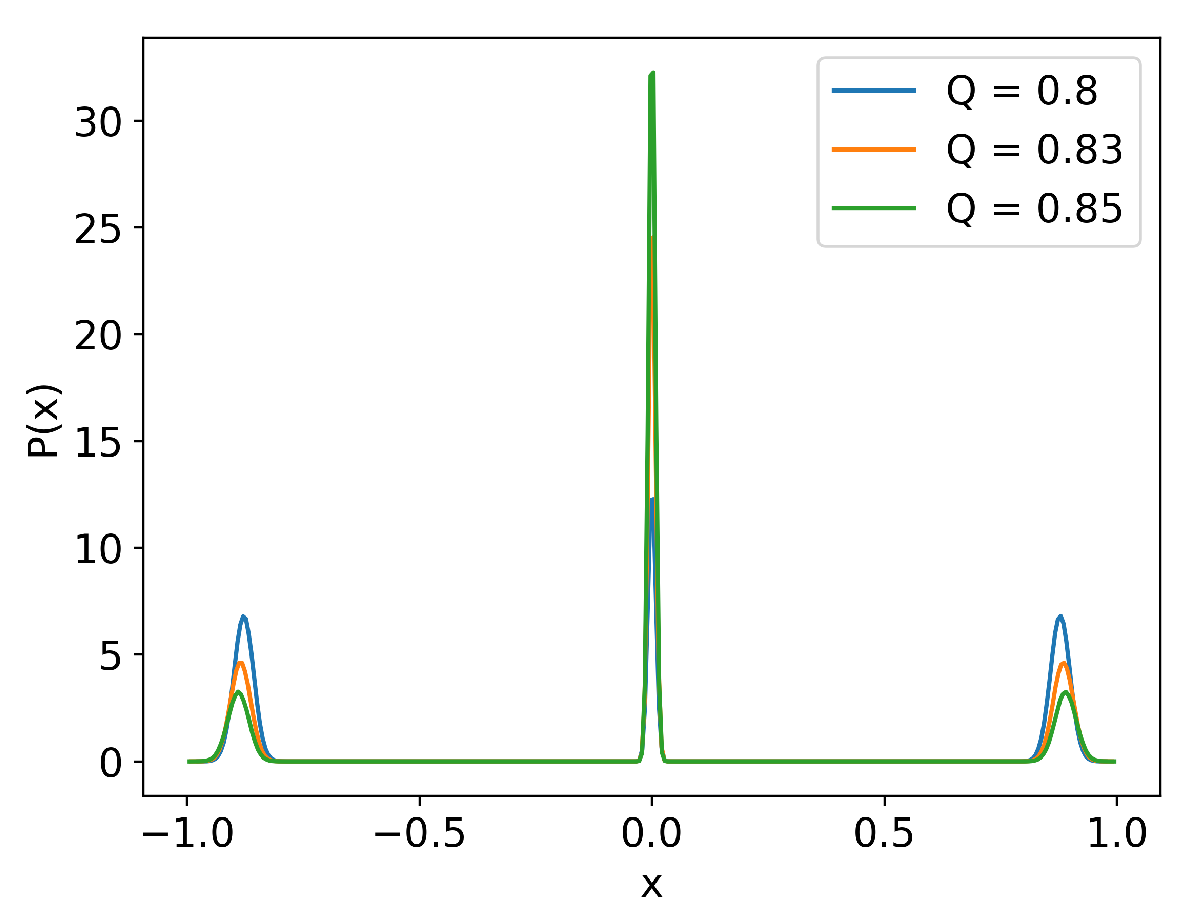
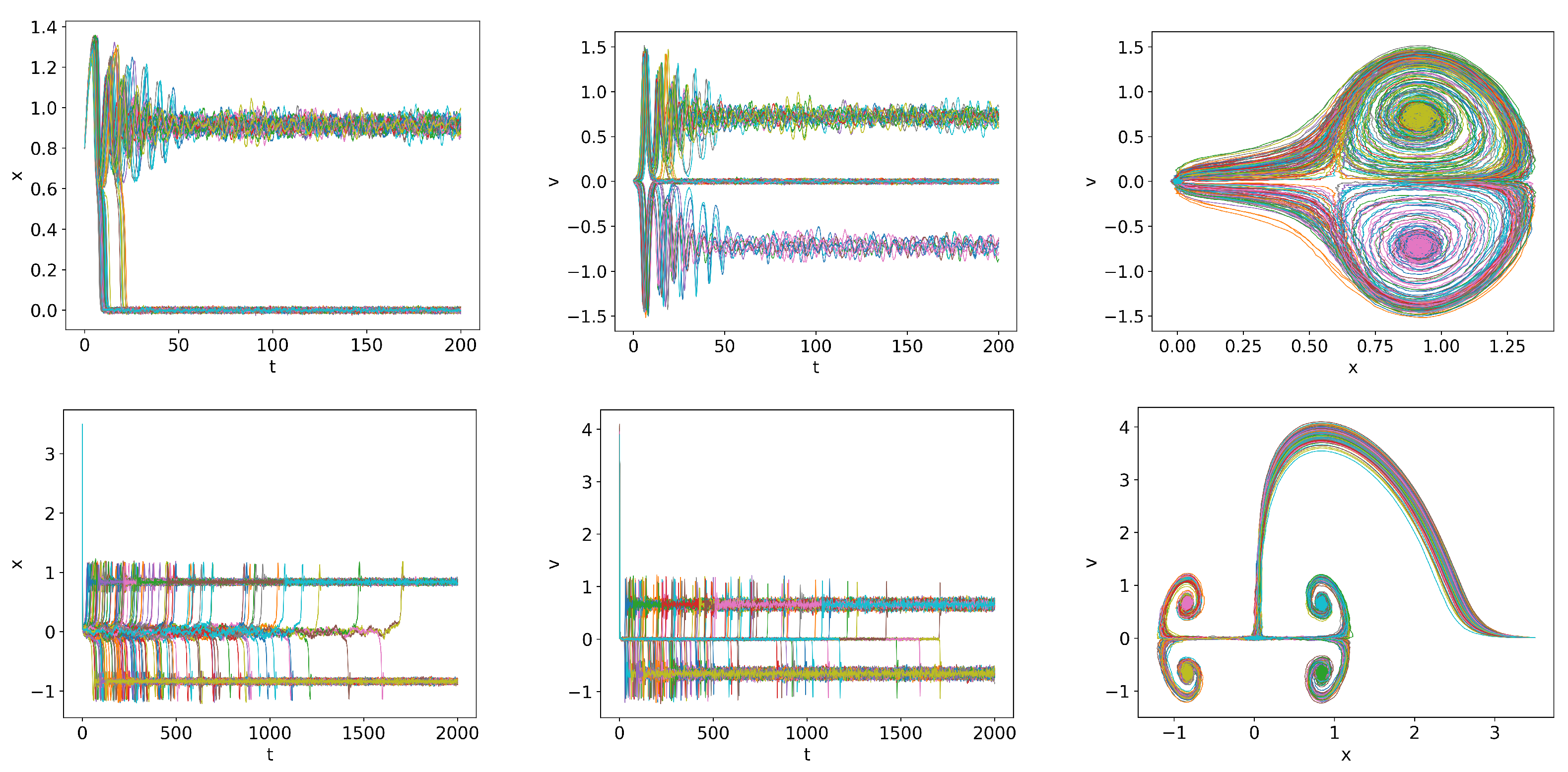
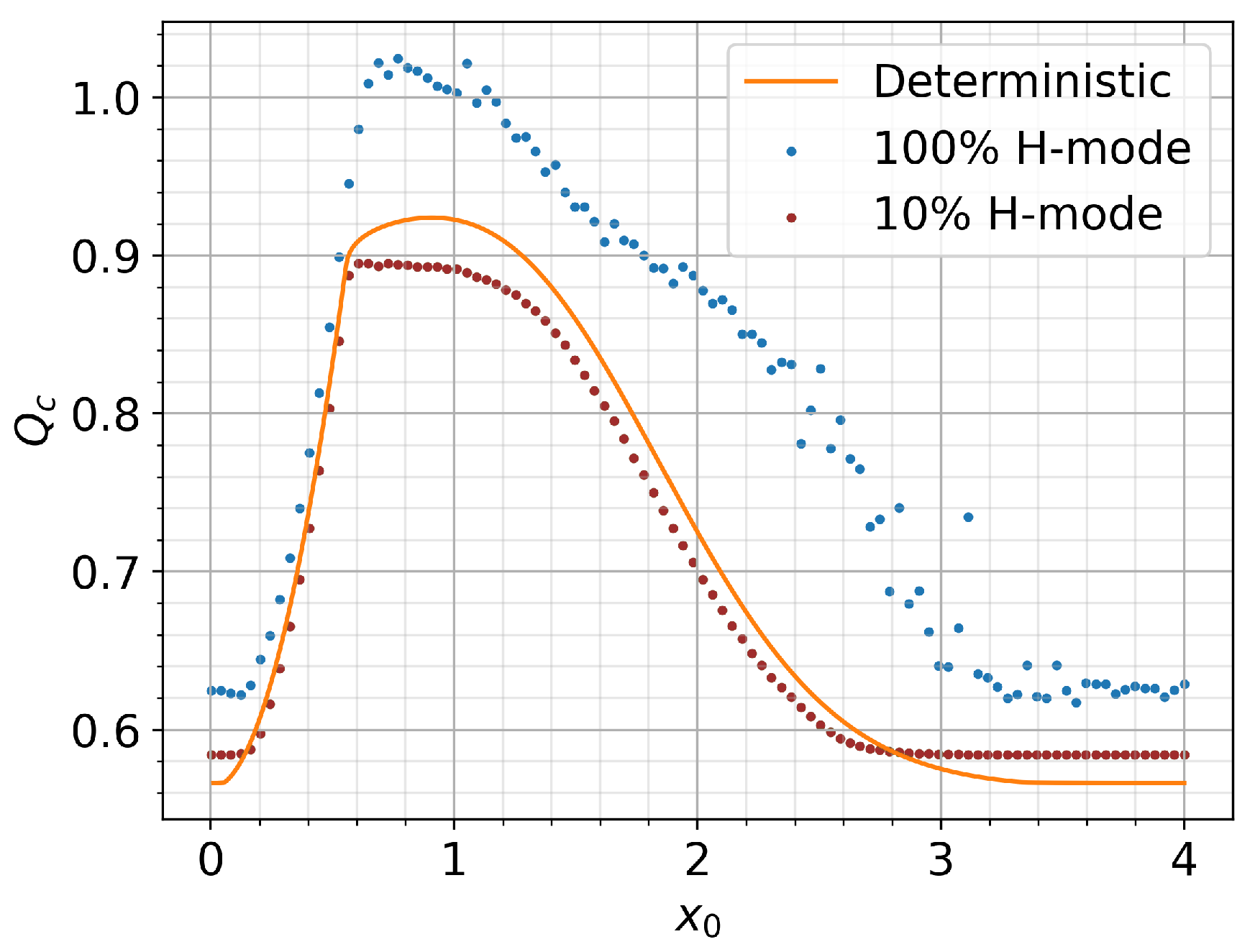
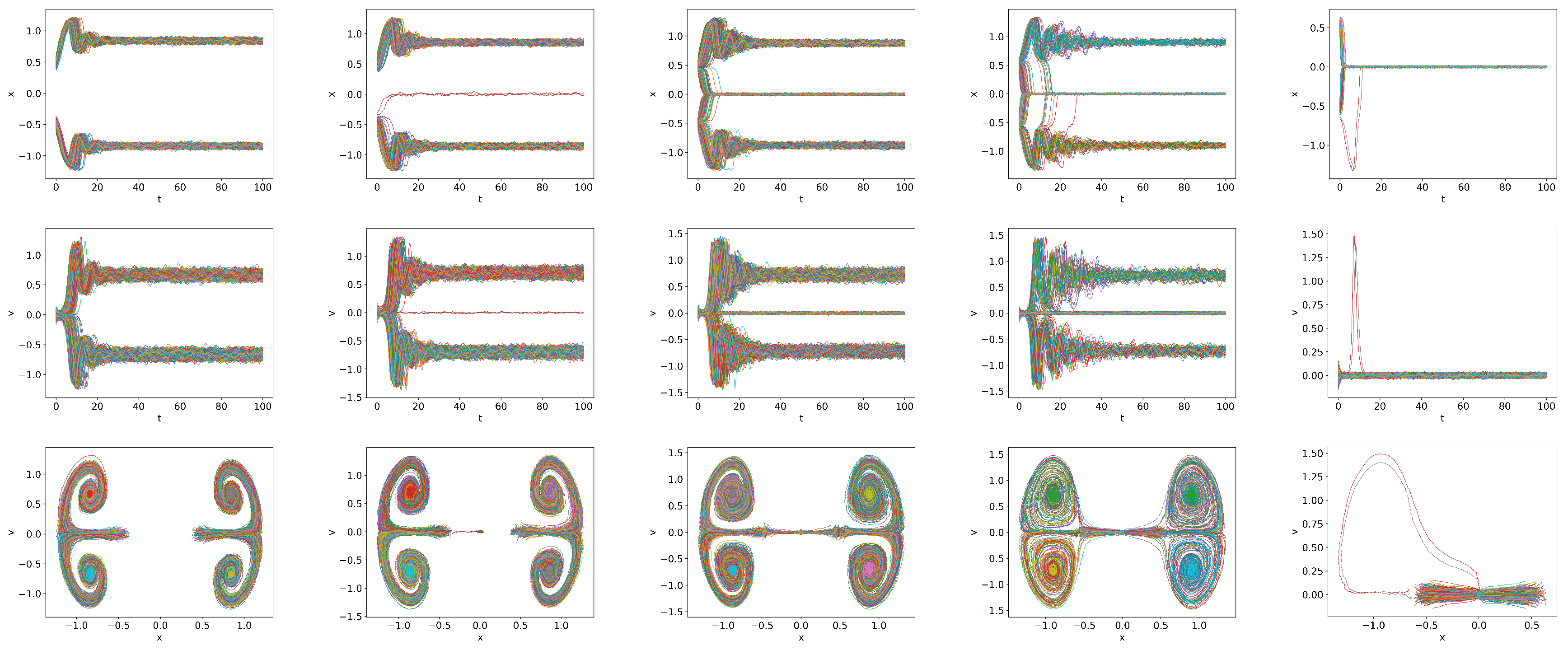

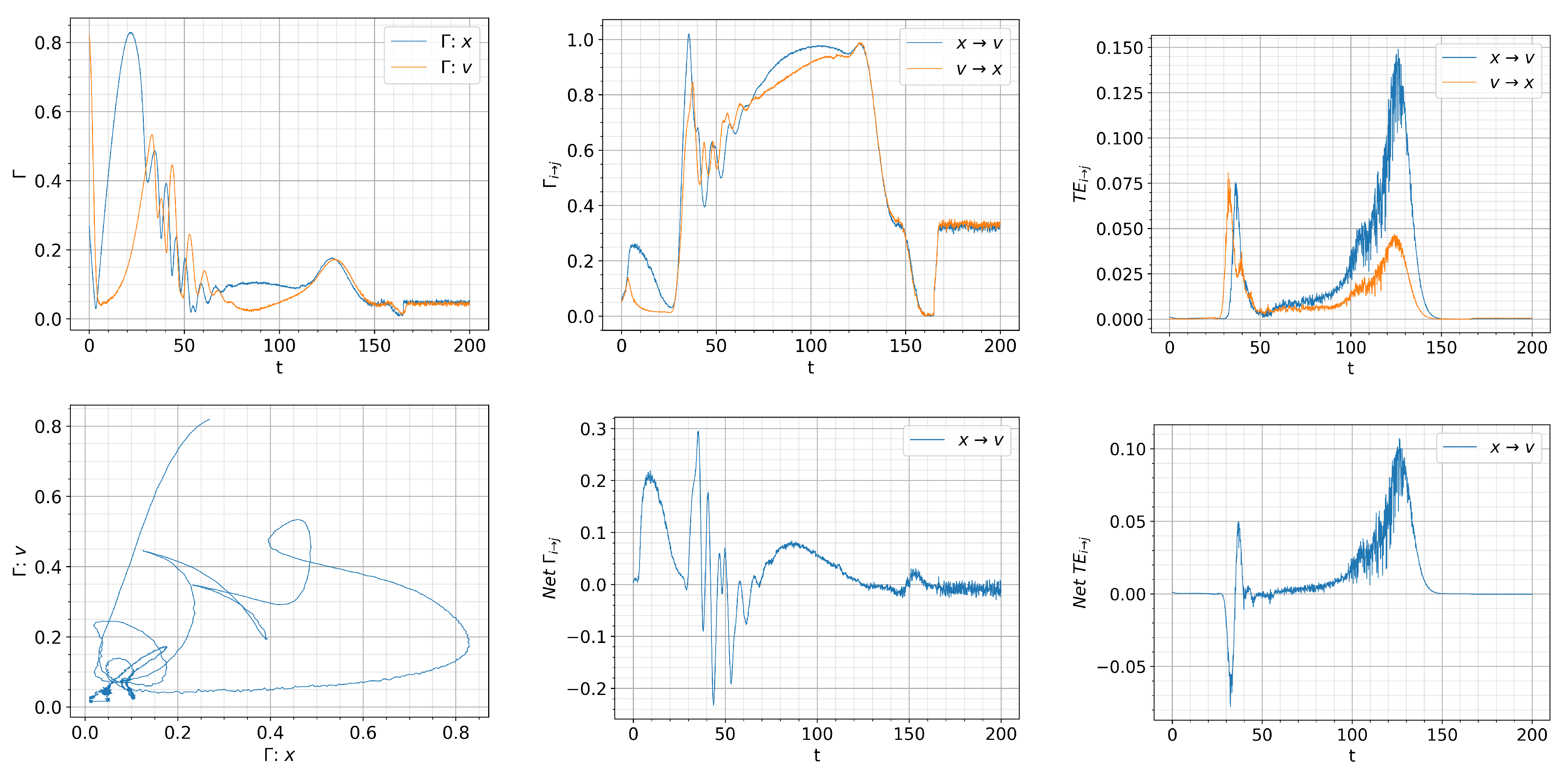

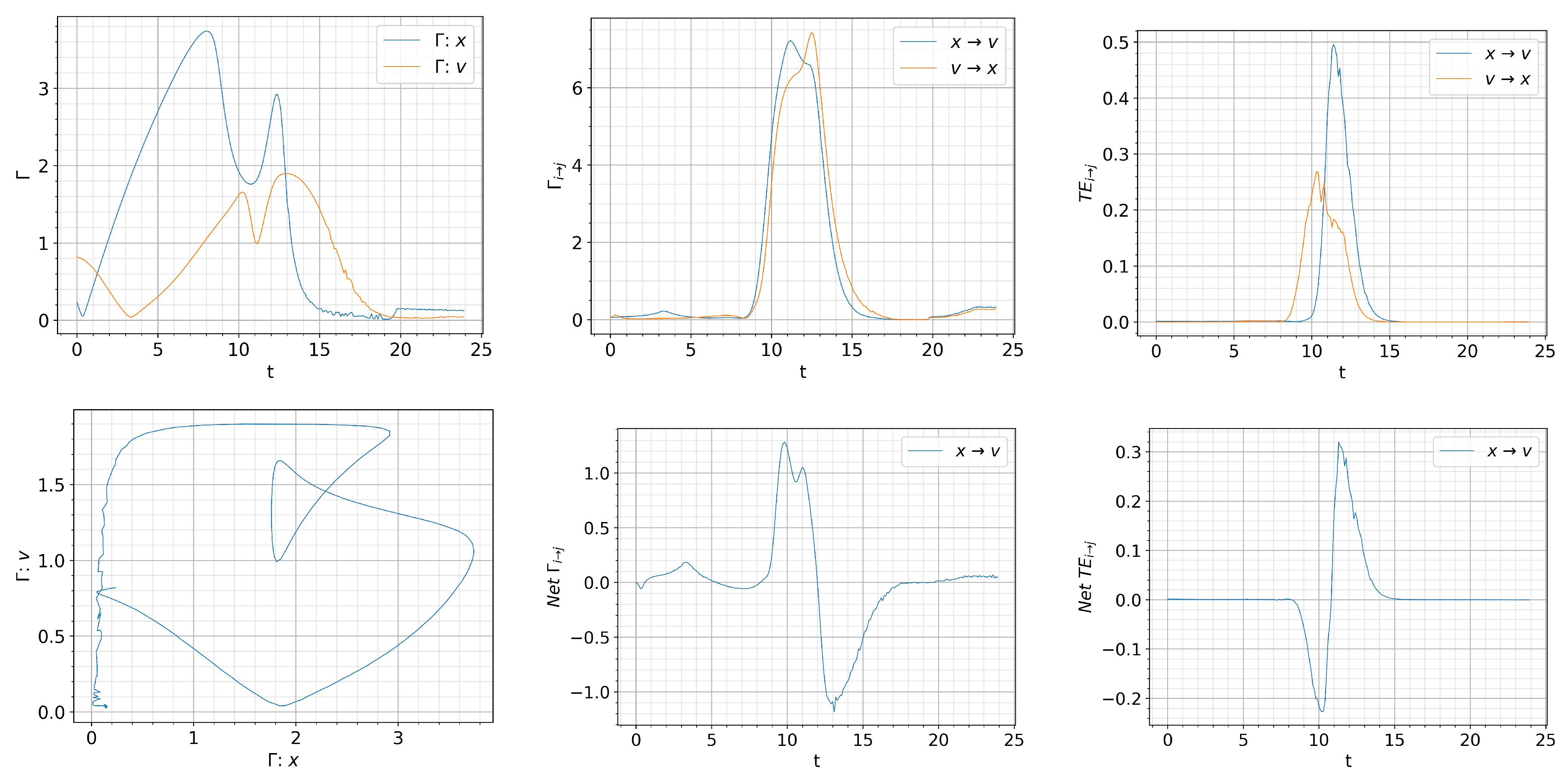
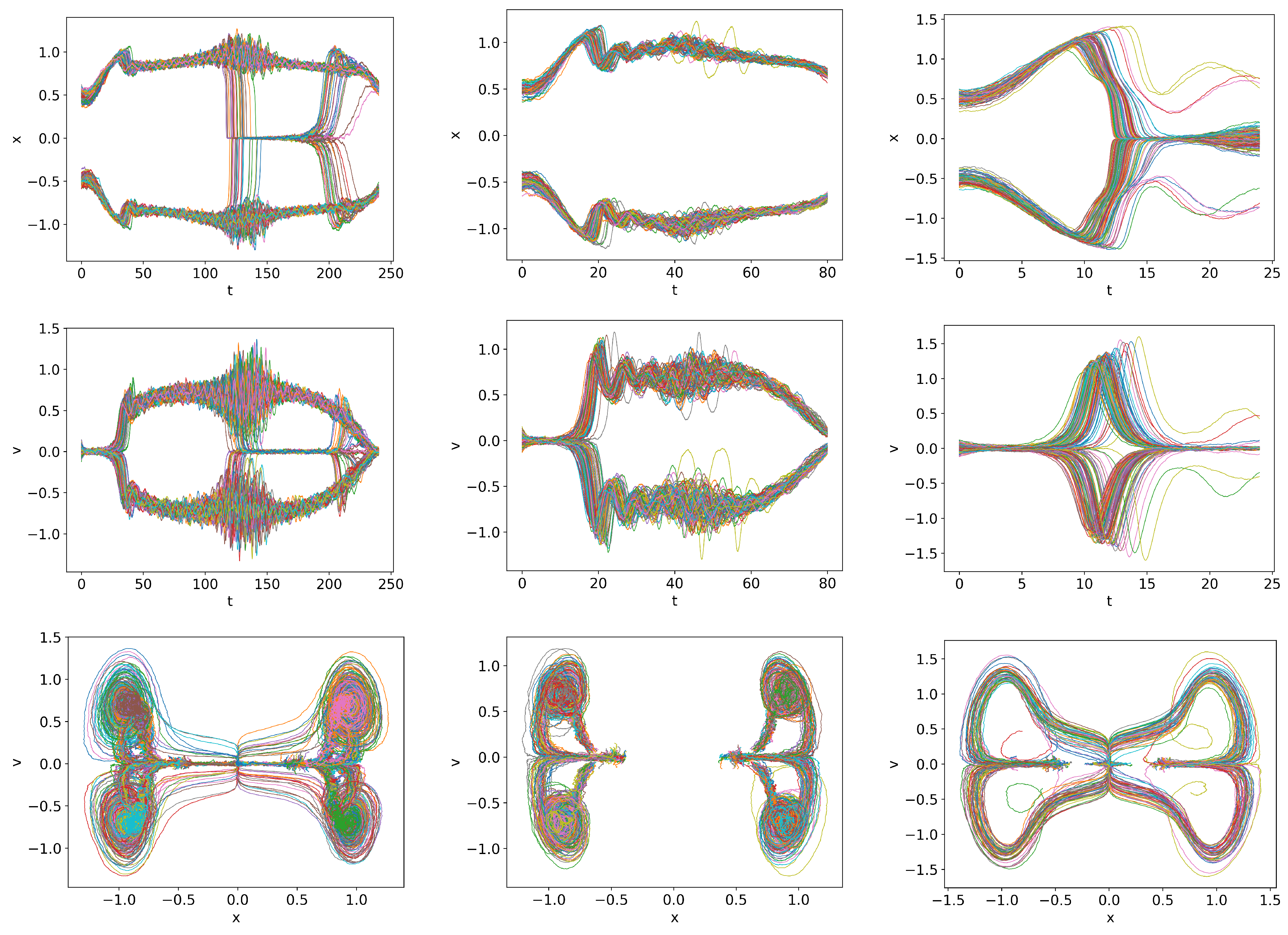





Disclaimer/Publisher’s Note: The statements, opinions and data contained in all publications are solely those of the individual author(s) and contributor(s) and not of MDPI and/or the editor(s). MDPI and/or the editor(s) disclaim responsibility for any injury to people or property resulting from any ideas, methods, instructions or products referred to in the content. |
© 2023 by the authors. Licensee MDPI, Basel, Switzerland. This article is an open access article distributed under the terms and conditions of the Creative Commons Attribution (CC BY) license (https://creativecommons.org/licenses/by/4.0/).
Share and Cite
Kim, E.-J.; Thiruthummal, A.A. Stochastic Dynamics of Fusion Low-to-High Confinement Mode (L-H) Transition: Correlation and Causal Analyses Using Information Geometry. Entropy 2024, 26, 17. https://doi.org/10.3390/e26010017
Kim E-J, Thiruthummal AA. Stochastic Dynamics of Fusion Low-to-High Confinement Mode (L-H) Transition: Correlation and Causal Analyses Using Information Geometry. Entropy. 2024; 26(1):17. https://doi.org/10.3390/e26010017
Chicago/Turabian StyleKim, Eun-Jin, and Abhiram Anand Thiruthummal. 2024. "Stochastic Dynamics of Fusion Low-to-High Confinement Mode (L-H) Transition: Correlation and Causal Analyses Using Information Geometry" Entropy 26, no. 1: 17. https://doi.org/10.3390/e26010017





